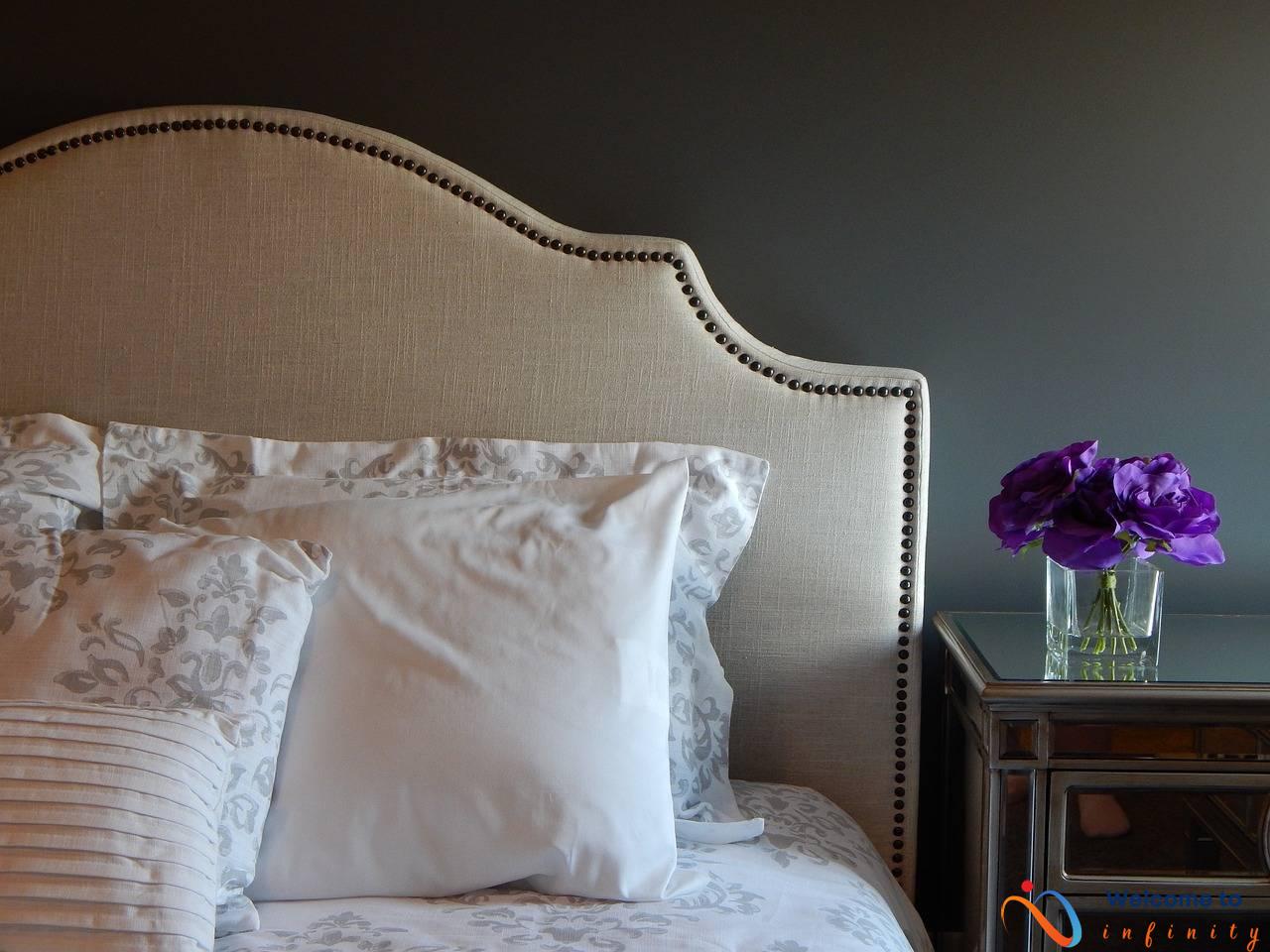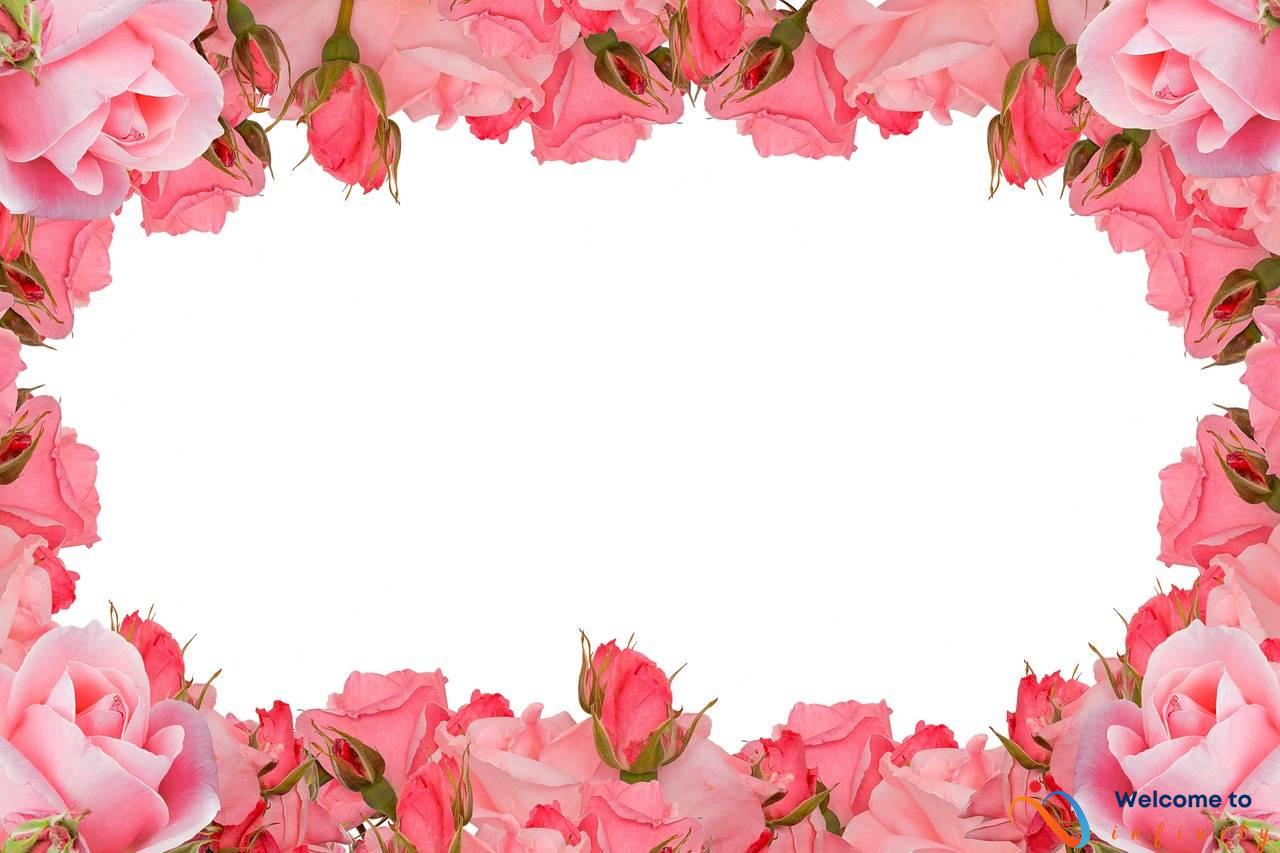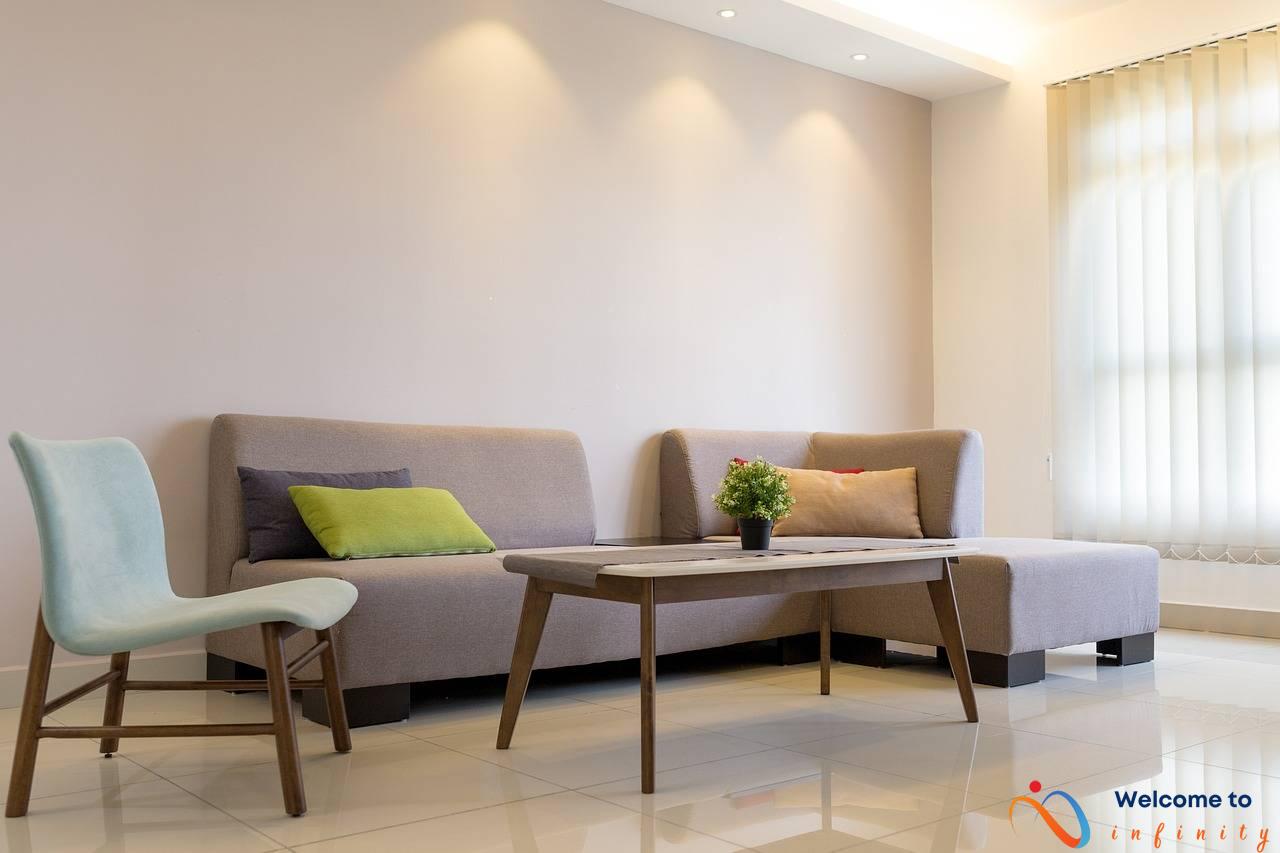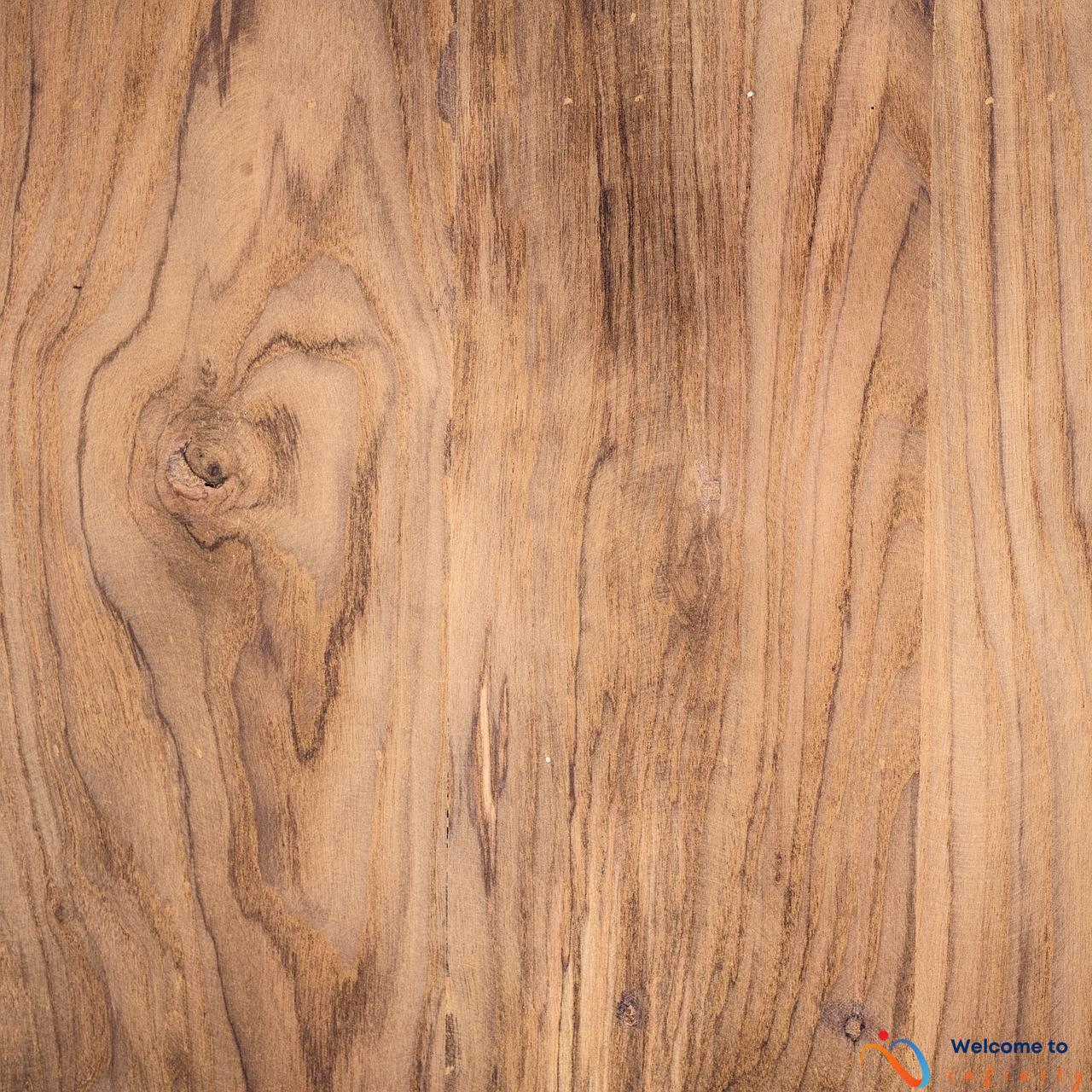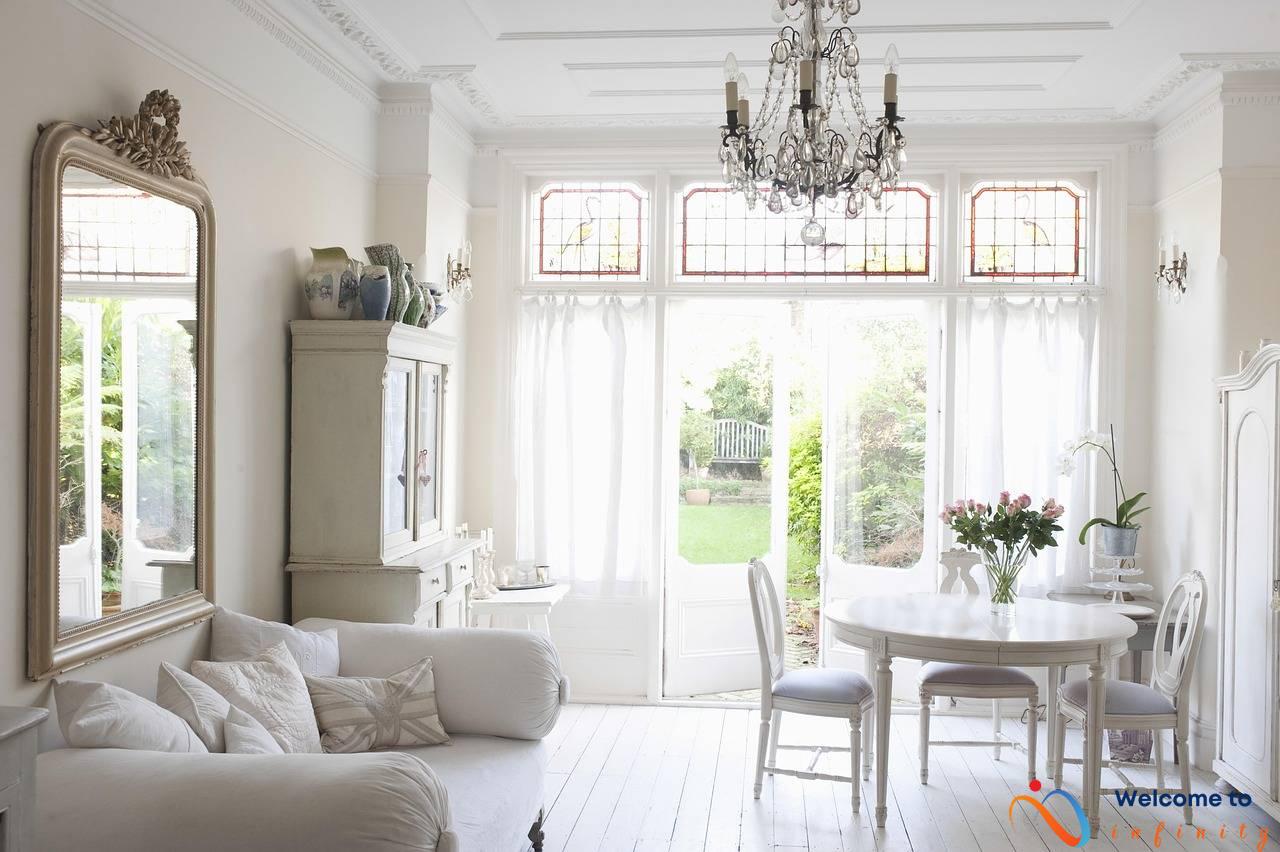If you're looking to bring some color into your home decor, why not go all out with a rainbow color scheme? This guide will take you through different ways to incorporate every color of the rainbow in your home, from subtle accents to eye-catching statement pieces. Whether you prefer a bold and bright look or something more sophisticated, there are plenty of ways to use rainbow colors in your home decor.
Before you start incorporating all the colors of the rainbow, it's important to choose a color scheme that works well together. By selecting a few key colors to focus on, you can create a cohesive look that doesn't feel overwhelming. Consider using a color wheel to identify complementary colors, or select shades that are already present in your existing furnishings and decor.
One of the easiest ways to add rainbow colors to a room is through accents like artwork, textiles, and accessories. A gallery wall with pieces in every color of the rainbow can create a stunning focal point in a living room or bedroom. You can even make your own DIY rainbow art pieces using paint chips or scrapbook paper. Colorful pillows and throws are another great way to add pops of color without committing to a major decor change.
If you want to make a bigger statement, consider using colorful rugs or curtains as statement pieces in a room. A rainbow accent wall can also create a striking visual impact in a living room or playroom. And if you're feeling particularly brave, you could even opt for rainbow-hued furniture or create an ombre effect on a dresser or chest of drawers.
When it comes to often-overlooked rooms like the kitchen and bathroom, there are still plenty of opportunities to use rainbow colors. A colorful backsplash or playful shower tile can add some personality to a neutral kitchen or bathroom. You can even use colorful tiles to create a unique mosaic feature in a shower.
Finally, don't forget about the small details like lampshades, light fixtures, and rugs. Choosing colorful versions of these items can be a great way to add a rainbow touch to a room. Just be sure to balance the colors throughout the space and avoid going overboard with too many competing hues.
Choosing a Rainbow Color Scheme
When it comes to decorating with all colors of the rainbow, the key to success is creating a cohesive color scheme. Here are some tips:
- Start with a neutral base: Consider choosing a neutral color like white or gray as your predominant color and then adding pops of rainbow hues.
- Consider the color wheel: When selecting colors, consider using opposite or complementary colors on the color wheel, such as blue and orange or red and green.
- Play with shades and tones: Experiment with different shades and tones of the rainbow colors to create depth and interest in your color scheme.
- Limit the number of colors: While you want to include all the colors of the rainbow, you don't want to overwhelm your space with too many colors. Try to limit your color scheme to 3-5 colors.
By following these tips, you can create a rainbow color scheme that is visually stunning and cohesive.
Rainbow Accents
Rainbow accents are a fun and easy way to incorporate all the colors of the rainbow into your home decor. Adding pops of color throughout a room can brighten up even the most neutral of spaces. Here are some examples of how to add rainbow accents:
- Artwork: Hang colorful artwork on your walls to instantly add a rainbow vibe to any room. Consider creating a gallery wall with pieces in every color of the rainbow, or select a statement piece in a bold hue.
- Textiles: Use colorful textiles to bring a rainbow touch to a room. Add a rainbow-colored throw pillow to your couch or bed, or drape a rainbow-colored throw over the back of a chair. Consider coordinating colors with other decor elements in the room.
- Accessories: Small accessories can make a big impact when it comes to adding pops of color. Think vases, picture frames, and decorative bowls in a variety of rainbow hues.
Remember, the key is to incorporate rainbow accents in a way that doesn't overpower the room. Adding too many colors can create a cluttered look. Instead, start with a few key pieces and build from there.
Creating a Rainbow Gallery Wall
A gallery wall is a great way to display artwork and add visual interest to a room. And when you use pieces in every color of the rainbow, it can create a bold and striking statement. Follow these steps to create your own rainbow gallery wall:
-
Choose a wall: Decide which wall in your home will be the best spot for your gallery. It could be a blank wall in your living room or bedroom, or even a wall in your entryway.
-
Select your artwork: Choose paintings, prints, photographs, or other pieces of art that feature all the colors of the rainbow. Make sure to mix up the sizes and styles of the artwork to add variety and interest.
-
Lay out the arrangement: Before you start hanging your pieces, lay them out on the floor to experiment with different arrangements. Take a photo of your favorite layout to reference when hanging them on the wall.
-
Hang the pieces: Begin by hanging the largest piece in the center and work outwards, using the photo you took of your layout as a guide. Use a level to ensure that each piece is hung straight, and make sure to leave enough space between each piece for visual balance.
A rainbow gallery wall can be a great way to inject some color and fun into your home decor. Don't be afraid to play with different color combinations and artistic styles to create a truly unique and personalized display.
DIY Rainbow Art
Are you looking for a fun and easy way to add more color to your home decor? Creating your own rainbow-themed art pieces is a great way to showcase your creativity while adding a whimsical touch to your space. Here are some simple DIY instructions for making your own rainbow art:
- Choose your canvas: Start with a blank canvas, whether it's a traditional canvas from an art supply store or a thrifted painting you no longer love. You can also use paper, cardboard, or even a piece of wood as your canvas.
- Get your supplies: Gather paint in all the colors of the rainbow, as well as brushes, a palette, and any other tools you might need such as stencils or tape.
- Create your design: Think about the look you want to achieve. You can go for a bold and graphic look by painting each color in distinct stripes or shapes, or opt for a soft and dreamy effect by blending the colors together through layering and blending.
- Experiment with techniques: Get creative and try different painting techniques such as dripping, splattering, or even using a sponge to create a textured effect.
- Add finishing touches: Once your painting is dry, consider adding some finishing touches like glitter or sequins for some added sparkle.
With just a few simple supplies, you can create your own one-of-a-kind rainbow art pieces to brighten up any room in your home!
Using Rainbow Pillows and Throws
Rainbow pillows and throws are the perfect way to add pops of color to a room without making a major decor change. Here are some tips for using these colorful accents:
- Start with neutral pieces of furniture, such as a beige sofa or a white armchair, to allow the rainbow pillows and throws to really stand out.
- Choose a variety of patterns and textures for your pillows and throws. Mix and match stripes, polka dots, and solid colors to create interest and depth.
- Don't be afraid to mix and match colors. While it's important to have a cohesive color palette, rainbow accents are all about embracing a variety of colors.
Here are a few examples of how to use rainbow pillows and throws in different rooms:
 |
 |
|---|---|
|
In a living room, use a mix of brightly colored pillows on a neutral-colored sofa to create a playful and inviting atmosphere. |
In a bedroom, layer a variety of textured throws in different colors on top of a white or neutral duvet for a cozy and colorful look. |
With these tips, you can easily add a rainbow vibe to any room in your home with colorful pillows and throws.
Rainbow Rugs and Curtains
When it comes to decorating with rainbow colors, adding colorful rugs and curtains is an easy way to make a bold statement in a room. Not only do they add a pop of color, but they can also tie together different elements of a room's decor.
There are a variety of ways to incorporate rainbow rugs and curtains into a space. One option is to use them as a focal point in an otherwise neutral room. For example, a brightly colored rug with every color of the rainbow can be paired with simple white walls and furniture to make it the standout piece in the space.
Alternatively, rainbow rugs and curtains can be used in rooms where there are already a lot of colorful elements, such as a playroom or a boho-inspired space. In this case, it's important to choose pieces that complement, rather than clash with, other colorful decor elements in the room. One option is to stick with a more muted rainbow color scheme, focusing on pastels rather than bright, saturated hues.
When selecting rainbow rugs and curtains, it's important to consider how they will interact with other patterns and textures in the room. For example, if you already have a lot of patterned pillows or bedding, it may be best to stick with a solid-colored rainbow rug rather than one with its own pattern.
- Choose rugs and curtains in complementary colors to other decor elements in the room
- Consider texture and pattern when selecting rainbow rugs and curtains
- Determine if you want them to be the focal point of the room or to complement other decor elements
Overall, using colorful rugs and curtains as statement pieces in a room is a great way to add a rainbow touch without committing to a major decor change. With a little bit of planning and consideration, rainbow accents can be seamlessly integrated into any space.
Rainbow Walls and Furniture
If you are looking to make a bold statement with your decor, rainbow walls and furniture are the way to go. Here are some ideas to inspire your rainbow-themed makeover:
Creating a stunning accent wall is easier than you might think. A rainbow theme is perfect for brightening up a room and adding a playful touch. To create a rainbow accent wall, choose your colors and arrange them in order. You can start with red on the left and end with purple on the right, or vice versa. Use painter's tape to mark where each color starts and stops, and then paint each section. You can either blend the colors together to create a seamless ombre effect, or keep them separated with sharp lines for a more geometric look.
Solid-colored furniture can be a bit boring, so why not mix things up with rainbow hues? You can either choose a piece of furniture with multiple colors, like a rainbow-striped chair or a colorful sofa, or update an existing piece with upholstery or paint. If you want to keep things subtle, choose a neutral-colored piece of furniture and add rainbow accents with throw pillows or a blanket.
If you don't want to commit to painting an entire wall in rainbow hues, an ombre effect is a stylish alternative. Choose your desired colors and paint them in gradient stripes, starting with the darkest color at the bottom and gradually getting lighter towards the top. You can create this effect on a single wall, or across an entire room with curtains or a large statement piece of furniture.
No matter how you choose to incorporate rainbow colors into your walls and furniture, it's sure to brighten up any space.
Painting a Rainbow Accent Wall
Painting a rainbow accent wall can be a great way to add a bold splash of color to any room in your home. Here are some step-by-step instructions on how to do it:
-
First, choose your colors. Decide on which colors you want to include in your rainbow and in what order. This will help determine how you want to paint your stripes.
-
Prepare your wall by filling any holes or cracks and sanding down any rough spots. Then, apply a coat of primer to the entire wall and let it dry completely.
-
Now it's time to start painting! Begin with the base color of your rainbow and paint a stripe about 6-8 inches wide horizontally across the wall. Use painter's tape to keep your lines straight.
-
Once the first stripe is dry, move on to the next color. Use the same technique to create a stripe next to the first one. Repeat this process until you have painted all the colors in your rainbow.
-
Using a small paintbrush, touch up any areas where the colors may have bled into each other or where the lines may not be perfectly straight.
-
Finally, remove the painter's tape carefully to reveal your beautiful rainbow accent wall!
When painting a rainbow accent wall, it's important to think about color placement. For example, warm colors like red, orange, and yellow should be on one end of the rainbow and cool colors like green, blue, and purple should be on the other end. Experiment with different patterns and layouts to find the one that works best for your space.
To finish off your rainbow accent wall, add some fun accessories in coordinating colors. Brightly colored throw pillows, artwork, or a boldly patterned rug will help tie the space together.
Mixing Rainbow Colors on Furniture
Introducing rainbow colors to furniture is an excellent way to inject some fun and brightness into any room. Here are some tips on how to mix rainbow colors on furniture:
- Choose a statement piece: Start with a large piece of furniture, like a sofa, bookshelf, or cabinet, and choose one with multiple colors or patterns that can be used as a base for the color scheme.
- Upholstering existing furniture: Bring life to your old furniture by incorporating new and bold colors into the upholstery. Choose vibrant patterns or textures that complement the room's overall palette.
- Painting existing furniture: Whether it's an old dresser or a chair, painting existing furniture in rainbow colors can give it a new lease on life. Choose colors that blend well with each other and the room's overall scheme.
- Mix and match: Don't be afraid to mix and match different pieces of furniture with rainbow colors. Pairing a colorful chair with a monochrome sofa can make everything pop.
Remember, when working with a rainbow color scheme, it's important to balance the colors. Choose a few bright statement pieces and then sprinkle a mix of soft and bold hues throughout the room to create a cohesive and visually pleasing environment. By incorporating rainbow colors into the furniture, you can easily achieve a colorful and cheerful vibe in any room.
Rainbow Kitchens and Bathrooms
Kitchens and bathrooms are often overlooked spaces when it comes to decor, but they are perfect places to incorporate a rainbow color scheme. One way to start small is by adding color through backsplashes, shower tiles, and bathroom tiles.
A colorful backsplash can be the perfect way to add some personality to a neutral kitchen. Adding a rainbow of tiles can create a playful and lively atmosphere in the space. To avoid going overboard, choose a neutral color for the cabinetry and countertops, and then add pops of color through the backsplash. Keep in mind the size of your kitchen; if it's small, opt for a smaller pattern and fewer colors to avoid a chaotic look.
In the bathroom, consider adding colorful tiles to the shower or tub area. If you have a neutral color scheme in the rest of the bathroom, adding a rainbow of colors through the shower tiles can add interest and a pop of personality. You can select a few hues that complement each other or choose tiles with different shades of the same color for a more subtle rainbow effect.
If you're not ready to commit to a full rainbow color scheme, start with small accents. Add some colorful towels or soap dispensers to your bathroom or switch out your kitchen's standard white tea towels for some colorful ones. A colorful rug can also tie the space together and add some much-needed color.
Overall, incorporating a rainbow color scheme in your kitchen and bathroom can be a great way to add some personality to often-overlooked rooms of your home. Whether you go big with a colorful backsplash or opt for smaller accents like towels and rugs, there are plenty of ways to add a pop of color to these spaces.
Designing a Rainbow Backsplash
If you want to add some pizzazz to your white or neutral kitchen, consider creating a rainbow backsplash. This splash of color will add a focal point to the room and brighten up your space. Here are some ideas for designing your rainbow backsplash to make it perfect for your kitchen:
- Choose a color scheme: For a cohesive look, choose a color scheme that includes all of the colors of the rainbow. Then, consider which colors you want to make the primary focus of your design.
- Select a pattern: When it comes to designing your rainbow backsplash, there are no rules. You can choose to create a subway tile pattern with rainbow-colored tiles or opt for a mosaic design.
- Consider the size: The size of your kitchen will play a large role in determining how large your rainbow backsplash should be. Be sure to measure the dimensions carefully before ordering your tiles.
- Keep it balanced: While a rainbow backsplash can be bold and eye-catching, it's important to keep the design balanced. Select colors that complement each other and don't look too cluttered or chaotic.
- Accessorize with care: If you're adding a lot of color to your kitchen, it's important to be careful about the accessories you choose. Stick with neutral kitchen utensils and dishes, so that your backsplash can take center stage.
Creating a rainbow backsplash in your kitchen is a great way to add some color and interest to your space. Use these tips to create a design that is both eye-catching and tasteful.
Colorful Tile Accents in Bathrooms
When it comes to decorating the bathroom, many people stick to neutral colors or shades of blue. But why not have some fun with colorful tiles? Here are some tips for adding playful tile accents to your bathroom without going overboard:
- Start with a neutral base: If you're worried about the colorful tiles overpowering the space, start with a neutral base on the walls and floors. Use white or beige tiles for the majority of the space, and then add pops of color with smaller accent tiles.
- Select a color palette: Just like with any other room, selecting a color palette is key. Stick to a few colors that complement each other, and use them in different shades and patterns. For example, if you want a bright and playful feel, consider using shades of pink, yellow, and green.
- Consider the placement: Where you place the colorful tiles can make a big difference. Consider using them in a stripe pattern in the shower, or creating a backsplash behind the sink. You could also use them to create a border around a mirror or window.
- Mix and match: Don't be afraid to mix and match different patterns and colors of tiles. Just make sure they work well together and are spaced out evenly.
- Balance it out: If you're using bright and bold tiles, balance it out with some neutral accessories like towels or a shower curtain. This will prevent the space from feeling too overwhelming.
Overall, adding colorful tile accents to your bathroom can be a great way to create a fun and playful atmosphere. Just remember to start with a neutral base, select a color palette, consider the placement, mix and match different patterns, and balance it out with some neutral accessories. With these tips in mind, you can have a bathroom that's both functional and stylish.
Rainbow Lighting and Accessories
If you're looking to add a colorful touch to a room, lighting and accessories are a great way to do it. Here are some creative ways to incorporate rainbow hues into your lighting and accessory choices:
Lampshades and light fixtures are a great way to add a pop of color to a room without committing to a major decor change. Look for lampshades or light fixtures that feature a rainbow of colors or choose a single shade for a bold statement. A colorful chandelier or pendant light can also be a statement maker in an otherwise neutral space.
- Choose lampshades and light fixtures featuring a rainbow of colors
- Select a single shade for a bold statement
- Opt for a colorful chandelier or pendant light as a statement piece
A rug is a great way to tie a room together and add a pop of color. Look for a rug with a rainbow of colors or choose a single hue to bring in a subtle touch of color. A colorful rug works especially well in a neutral space where it can really stand out.
- Find a rug with a rainbow of colors for a bold statement
- Choose a single color to bring in a subtle touch of color
- Use a colorful rug to make a statement in a neutral space
By incorporating colorful lighting and accessories into a room, you can easily add a rainbow vibe without committing to a major decor change. Whether you choose a rainbow lampshade or a colorful rug, these simple additions can make a big impact!
Choosing Colorful Lampshades and Light Fixtures
When it comes to adding a rainbow touch to a room, one way to do so is by choosing colorful lampshades and light fixtures. These vibrant pieces can instantly liven up a space and add a playful pop of color. Here are some examples of how to incorporate these colorful accents:
- Multi-colored lampshades: Instead of traditional plain lampshades, opt for ones with multiple colors such as red, blue, and green. These lampshades can add a fun and colorful twist to any room, especially when paired with a neutral lamp base.
- Rainbow chandeliers: For a more dramatic touch, a chandelier with rainbow-colored crystals can create a stunning centerpiece in a room. This type of fixture is perfect for a dining room or bedroom.
- Colorful pendant lights: Pendant lights that incorporate different colors can be a great way to tie together different elements in a room. For instance, if you have a colorful rug or artwork, a pendant light with similar hues can complement the room without overwhelming it.
When selecting lampshades and light fixtures, it's important to consider the overall color scheme of the room. Choose pieces that will complement existing colors and patterns, rather than clash with them. Additionally, be sure to take into account the amount of light the fixture will emit – a colorful lampshade may look gorgeous, but if it doesn't provide enough illumination for the space, it may not be the best choice.
By incorporating colorful lampshades and light fixtures into your decor, you can easily add a fun and playful rainbow touch to any room. These accents can be a perfect way to create visual interest and complement existing color schemes. So why not brighten up your space with a colorful lighting choice today?
Adding a Pop of Color with a Rainbow Rug
If you're hesitant to make a bold statement with rainbow walls or furniture, using a colorful rug is a great way to incorporate a rainbow color scheme with a more subtle approach. Here are some ideas for using a rainbow rug to tie a room together and add visual interest:
- Make it a focal point: Choose a rainbow rug as the standout piece in a room by placing it in the center of the space or under a key piece of furniture like a coffee table or sofa.
- Pair with neutral furniture: Bold rainbow colors can easily clash with other patterns and textures, so it's best to pair a rainbow rug with neutral furniture to create balance.
- Add complementary accents: Make your rainbow rug stand out even more by adding complementary accents like throw pillows or curtains that feature the same colors found in the rug.
- Use different textures: Mix and match different textures like shag or plush rugs with a rainbow rug to create a layered look and add visual interest.
- Create a monochromatic palette: For a more sophisticated look, choose a rainbow rug with different shades of the same color and incorporate other decor elements in the same shade to create a monochromatic palette.
By using a colorful rainbow rug, you can easily add visual interest and create a cohesive look in any room of your home. Don't be afraid to experiment with different textures and color combinations to find the perfect fit for your space.
The Dos and Don'ts of Rainbow Decor
When it comes to decorating with all the colors of the rainbow, there are definitely some dos and don'ts to keep in mind. Here are some tips to help you create a cohesive and stylish rainbow palette:
- Limit the number of dominant colors in a room to avoid overwhelming the senses
- Stick to a maximum of three to four colors for a more unified look
- Avoid pairing bold hues together, and instead choose one or two bright shades to highlight
- Use neutral shades to balance out brightly colored walls or furniture pieces
- Choose a color scheme that complements your existing decor
- Pair different shades of the same color for a subtle and sophisticated look
- Use a monochromatic color scheme with a pop of rainbow color for a modern twist
- Select complementing colors from opposite sides of the color wheel
- Use varying shades of a pastel color palette for a softer and more subdued rainbow look
It's important to remember that not every decor element in the room needs to be a bold rainbow hue. Instead, use a mix of bold and subtle colors to create visual interest while still maintaining a cohesive look.
By following these dos and don'ts, you can confidently decorate your home with every color of the rainbow and create a stylish and cohesive palette that will make your space feel bright and cheerful.
Avoiding a Clashing Color Scheme
Choosing a rainbow color scheme for your home décor can be a fun and exciting task, but it can also be overwhelming. The last thing you want is for your space to look chaotic and uninviting. Here are some tips on how to combine colors in a way that adds interest without overwhelming the senses.
- Stick to a maximum of three dominant colors in a room, with the other colors used for accents.
- Use shades from the same color family for a cohesive look. For example, combining different shades of blue and green can create a calming and peaceful atmosphere.
- Use the rule of 60-30-10 – 60% of the main color, 30% of the secondary color, and 10% of the accent color.
- Choose neutral colors to balance out the bold and bright rainbow colors. White, beige, and gray can be great neutral choices.
Another way to avoid a clashing color scheme is by using patterns and textures. If you have a bold patterned piece, such as a rug or artwork, pull colors from that piece for other accents in the room. Combining different textures, such as a fuzzy throw pillow or a sleek ceramic vase, can also add interest to a room without overwhelming it.
Lastly, be mindful of the purpose of the room. Softer colors may work better in a bedroom, while bolder colors can work in a fun and playful living room. Don't be afraid to experiment and have fun, but always keep balance and harmony in mind when combining different colors.
Creating a Cohesive Rainbow Palette
When using all the colors of the rainbow, it's important to select a color palette that looks balanced and sophisticated. The key is to choose colors that complement each other and create a cohesive look throughout the room. Here are some tips to help you select a rainbow color palette:
- Start with a base color: Choose one color as the base for your color palette. This can be a neutral color like white, gray, or beige, or a bold color like navy blue or emerald green.
- Select complementary colors: Look for colors that are opposite each other on the color wheel. For example, blue and yellow or green and red. These complementary colors will create a dynamic contrast in the room.
- Choose analogous colors: Analogous colors are colors that are next to each other on the color wheel. For example, orange, yellow, and green. These colors work well together and create a cohesive look.
- Use the 60-30-10 rule: This decorating rule suggests using 60% of the room's color for the walls, 30% for the furniture and textiles, and 10% for accent pieces like artwork, pillows, and rugs.
- Stick to a limited color palette: Using too many colors can create a chaotic look. Try to limit your color palette to three to five colors.
Remember, when using a rainbow color palette, it's important to balance bold, bright colors with softer, more muted hues. By following these tips, you can create a rainbow-inspired room that looks balanced and sophisticated.



